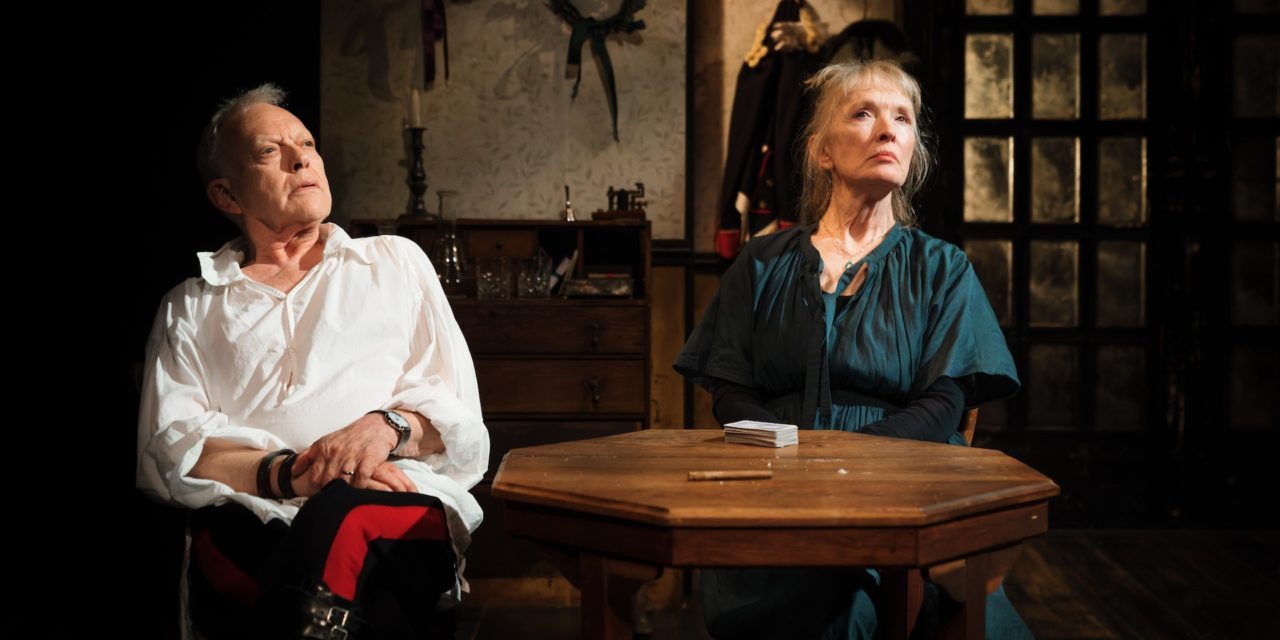
19 May – 4 June
As the wellspring of domestic Scandi Noir, The Dance of Death sits at the head of a genre of excoriating internecine, marital or sexual dramas. The number of works that take the Dance of Death as their model show the interest audiences have in these destructive relationships where passive-aggressive behaviour breaks out into open hostility. Cultural convention is often the nucleus around which oppositely charged particles are forever bound in perennial conflict. Or perhaps one should say, ‘similarly charged’, since Alice is no less a combatant than the Captain (Hilton McRae) who, being in charge of a remote and isolated garrison, seems to have been reduced to indulging in the only sport available – baiting his wife.
Lindsay Duncan as Alice, her paleness of skin emphasized by her dark dress, exhibits an inner strength and rawness in her resignation to the marital conflict. ‘I’m so scared of him’, she says with a wry casualness that belies the statement. The play is not concerned with the ‘why’, but the consequence of being, in Alice’s words, ‘Shackled to a man I’ve always hated and now detest’. The consequence is that they circle each other like chained gladiators in a battle of wills, but with the resignation of familiarity, of old ground being re-trod.
The change of sex in Rebecca Lenkiewicz’s adaption, in which the original character, Kurt, becomes Katrin sets a new hare running. Demanding that Katrin (Emily Bruni) kiss her boots shows a sexually dominant side to Alice’s character. This bi-curious Alice has as much of the sexually coercive controller in her makeup as the leather-booted Captain; is this a decisive element in the doomed relationship’s bitter struggle? It’s not something the play concerns itself with so in that respect the adaption offers not so much a hare to chase as a red herring.
Mehmet Ergen’s production rises like a cake in the oven only to slump then rise again and finally settle slightly undercooked whilst being tasty in parts. Neither gloves-off visceral nor comically spiteful it is perhaps a little too middle class, a touch too polite. I had the feeling that if they had a television to goggle at life would have carried on much like any other, unfulfilled, but somehow muddling through. In that respect Grace Smart’s shabby chic design adds to the feeling of weary familiarity.
For all that it remains a sharp portrayal of character and the currents that animate a broken relationship.
★★★☆☆ Graham Wyles 2/06/22
Photo Credit: Alex Brenner


